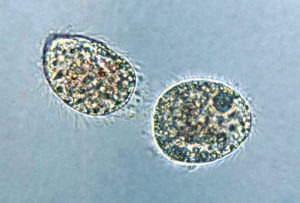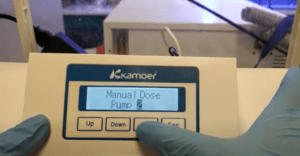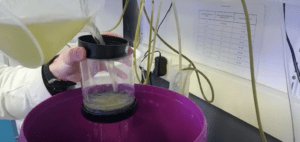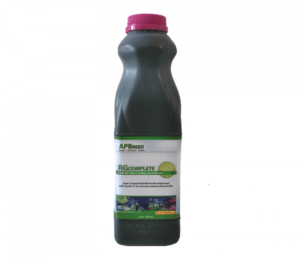Elimination of ciliates in a rotifer culture
Introduction
In the laboratory, the culture of zooplankton used as live food for the breeding of fish and filter-feeding animals is quite widespread. The most widely used zooplankton in continuous culture is undoubtedly the rotifer L-type Brachionus plicatilis. This zooplankton culture enriched with microalgae has excellent nutritional qualities which are no longer to be demonstrated, provided that a source of microalgae with very good nutritional qualities is used as well. However, zooplankton cultures such as rotifers are not axenic so commensal organisms from the environment such as ciliates can grow with rotifers.
Where do Ciliates come from?

Ciliates can come from the water used in the culture, from the surrounding environment or brought with the rotifers used to start a new concentrated rotifer culture. They are smaller (20 to 35µm) and less active than rotifers, they also feed on small microalgae and decaying matter. The ciliates develop especially when the rotifer culture is over-fed and therefore uneaten algae decompose in the water.
Are Ciliates dangerous for fish and humans?
Ciliates are not considered pathogens for rotifers, fish or humans. However, they can be healthy carriers of aquatic animal pathogens. Ciliates by developing in rotifer culture will compete with rotifers for the consumption of algae and thus become a nuisance.
Procedure to eliminate Ciliates from your rotifer culture :
Firstly, it is important to know that when the rotifers are healthy and have healthy culture water, the rotifers naturally eliminate the ciliates in the culture tank. It is when the crop is out of balance that the ciliates population is no longer controlled by the rotifers. Thus, the quantities of microalgae used to feed the rotifers each day must be checked according to the population density present. It is important to control the correct operation, calibration of the peristaltic pump which feeds the rotifer culture with microalgae.
 Link to the explanatory video on the operation of the peristaltic pump
Link to the explanatory video on the operation of the peristaltic pump
Then it is necessary to keep in mind to use 11ml of RG complete for 3 million rotifers in a 14L culture tank by changing 30% of the culture every day. Then multiply these values according to your needs in rotifers.
Finally the radical procedure consists in changing all the water in the culture tank. This is done by concentrating the rotifers in a 41µm sieve. In addition, rinse well the concentrated rotifers in the sieve so that all the ciliates present in the culture pass through the sieve and are not retained. Finally, re-suspend your rotifers in water recently prepared with osmosis water which has been prepared at the right salinity and temperature for your rotifers (15ppt at 25°C for our strain).
 Link to the explanatory video on the maintenance of rotifer culture
Link to the explanatory video on the maintenance of rotifer culture
We advise you to check that the ciliates have been eliminated. Carry out this control by taking water from the culture, observe the sample under slide and 1ml Sedgewick slide under the microscope. If a few ciliates are still present, repeat the procedure and change the culture water again until complete removal.

